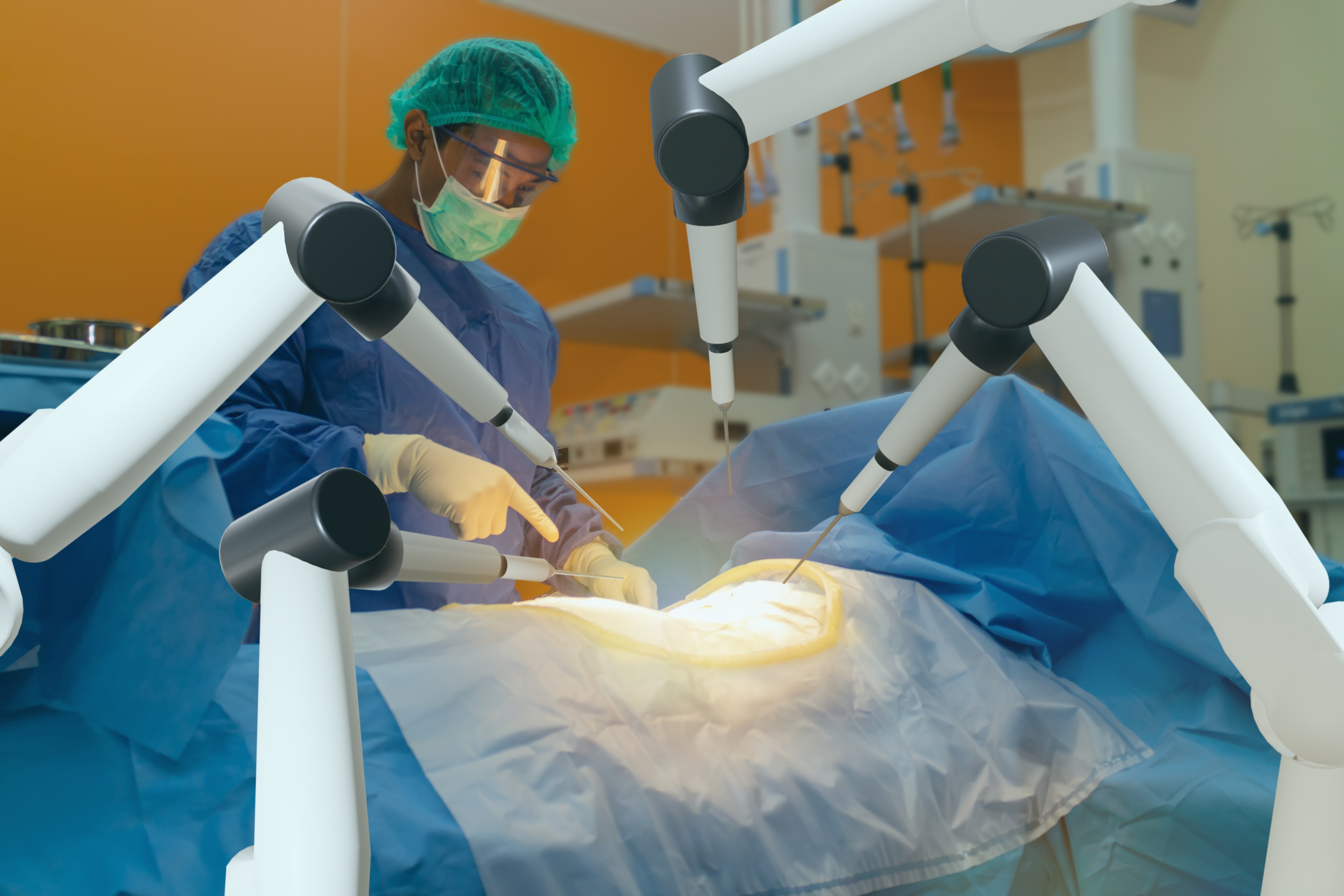Biotech stocks have been underperforming, but the drops in Puma Biotechnology (PBYI 3.02%), Clovis Oncology (CLVS +0.00%), and Regenxbio (RGNX 5.76%) have been downright jaw-dropping. Post-approval sales have been slow to materialize for Puma Biotech and Clovis Oncology, respectively, and concerns about regulatory disclosures by a licensee have weighed down Regenxbio. Is it finally time to step up and buy these stocks?
In this episode of The Motley Fool's Industry Focus: Healthcare, analyst Shannon Jones is joined by contributor Todd Campbell to explain what's gone wrong at these companies and, importantly, what could go right from here.
To catch full episodes of all The Motley Fool's free podcasts, check out our podcast center. To get started investing, check out our quick-start guide to investing in stocks. A full transcript follows the video.
This video was recorded on Oct. 9, 2019.
Shannon Jones: Welcome to Industry Focus, the podcast that dives into a different sector of the stock market every single day. Today is Wednesday, October the 9th, and we're talking healthcare. I'm your host, Shannon Jones, and I am joined via Skype by healthcare guru Todd Campbell. Todd, how's it going over there?
Todd Campbell: It's going really well! I started putting some real good thought into my Halloween costume for this year. Have put any thought into what you'll be wearing?
Jones: I have been strategically planning with my 9-year-old daughter what exactly we're going to do. I don't think we're going to go all-out quite like you, Todd. The Campbell household takes it to a whole 'nother level.
Campbell: [laughs] Yes, we have a lot of fun with it. I mean, it's only once a year. I might be a little tame this year. I don't know. I've got some ideas.
Jones: Don't hold back, Todd! I sincerely hope that we will have a show where you actually wear your get up, so at least our YouTube viewers out there can see it. If you didn't know, we do post these podcasts on to YouTube. Go to The Motley Fool YouTube channel to check them all out. Hopefully we'll get a sneak peek, Todd!
Campbell: [laughs] Maybe.
Jones: All right, you're going to keep us in suspense here.
Let's talk about today's show. Today's show is all about beaten-down biotechs. Todd, there's quite a few in the market today. Biotech sentiment right now is probably near an all-time low. Today's show, we're actually going to be diving into three beaten-down biotechs, and telling you which one we think is actually a good buy right now.
With that, Todd, let's dive into the first one.
Campbell: Shannon, these could be, say, scary stocks.
Jones: There you go! You're taking all the mojo away from our Halloween show! Stop it, Todd! [laughs]
Campbell: [laughs] That's right. So, yeah, we're going to be talking about today three really beat-up stocks. I'll let Shannon tee that up. These declines have been absolutely... if you're an investor in these stocks, it's been extremely painful. The first one we're probably going to be talking about is Puma Biotech, which already has a drug on the market and everything. Yet, Shannon, that stock has absolutely been pummeled.
Jones: Oh, my goodness, "pummeled" is an understatement. Puma was actually once a darling of biotech. Got so much praise a few years ago. At one point, the stock actually hit $270 a share. That was back in 2014. That stock now is down to $7 and some change, Todd.
Like you said, this is a company that actually has a drug on the market, so it's not like it was an extremely speculative play. Their bread and butter drug, Neuralynx, was once thought to be well on its way to blockbuster status for treating patients who have had and been treated for a certain type of breast cancer. Unfortunately for Puma Biotechnology, this is a classic case of, "Yes, you passed all of the regulatory hoops. You got approval. But the drug and the stock have gotten walloped post-approval." We've even seen some steep drops just this week. Todd, what is going on with Puma?
Campbell: Even pre-approval -- OK, if you go back in time, there was a lot of excitement about this company. It's one of the reasons that it ended up trading up so high. One reason for the excitement is that the company's leader, Alan Auerbach, had been there and done that. He had actually owned the company, or led the company, who developed Zytiga, a very widely used multibillion-dollar prostate cancer drug. He sold that company to J&J before starting Puma Biotech. So a lot of people were hoping for a similar outcome. The fact that Neuralynx addresses a massive patient population -- breast cancer is diagnosed in over a quarter of a million Americans alone every year, and I believe over 40,000 people sadly pass away from it. And of those, about 15% have the genetic makeup, HER2-positive, that Neuralynx theoretically could address. The whole concept here originally was, let's treat patients with Neuralynx to help prevent this disease from coming back. That is indeed what they eventually, back in 2017, won the FDA approval for Neuralynx's use in.
However, it was a very roller coaster-y ride when it came to the clinical trial results. That was because of some very significant safety concerns, namely severe-stage diarrhea, which was incredibly common, unfortunately, within the people who were receiving this drug. Again, by design, this is to delay the recurrence, or help prevent the recurrence. So, these people had already been treated, they'd already been, quote-unquote, "cured," but a lot of these people relapse. So, the idea was, take this drug to help keep it from coming back. The problem is, within 30 days, a ton of people were discontinuing treatment because of these cases of diarrhea.
Jones: Yeah. There's a combination of things that have come together in a perfect storm to make Neuralynx a big question mark. Even in terms of survival benefit, we didn't see a substantial change from placebo. After two years, 94% of patients that were treated didn't experience cancer recurrence or death compared with about 92% of patients treated with placebo. All in all, relatively small in the grand scheme of things.
You talked about the side effects, severe diarrhea in most patients. They're taking this for about 12 months after they've had their initial treatment. A lot of the patients that we've seen on therapy when it was approved back in 2017 have now come off. You mentioned just how bad the diarrhea is. It's grade three, which is pretty high. Over 90% of patients did experience diarrhea. It's not just that; it's also the cost. This drug costs about $10,000 a month, so you're looking at $120,000 a year. Tied together, survival benefit, just barely beating out placebo, plus the cost, plus diarrhea, it's a perfect storm of things that are making this such a commercial... I don't want to call it a flop, because they do have some opportunities ahead, but such a big headache for this company right now.
Campbell: Right. The biggest issue has been patient churn. You talked about, obviously, take it for a year, then you stop taking it. I think once they started introducing prophylaxis to try to control the diarrhea early on, that did help a little bit with the discontinuations. But they still had a discontinuation rate that I believe was north of 40%, even with prophylactic. Now, they have done some trials on a new regimen to try and control the diarrhea. That seems to have cut discontinuations in half. That was just added to the label very recently. As doctors get more educated about this new regimen, perhaps that churn decreases and they can start to build a little bit of sales momentum.
Just to give some context to listeners, revenue in the second quarter was about $54 million. Two hundred million-dollar run rate. That's pretty respectable. That was up 6%, which is not very exciting, year over year. Again, perhaps the new regimen helps to kick-start sales. Then, they've also got a supplemental new drug application that's been filed and accepted by the FDA that could allow for the use earlier in treatment as part of a combination therapy. There's a decision that's coming out on that next April. Maybe they addressable market starts to increase a little bit in 2020, education of doctors, patients maybe stay on it a little bit longer because of the new prophylactic treatment, and then maybe this company can see its share price finally stop sliding.
Jones: Yeah. But you can't forget, there's also a competition out there. Seattle Genetics has a drug, Tucatinib, potentially with fewer side effects. They should have data by the end of this year as well. Given the side effect issues with this Puma drug, even if Tucatinib isn't as effective, if they come in at a lower price point with fewer side effects, I do think they have a real shot at grabbing substantial market share here. That will be a key area to watch. They are expanding internationally. We could continue to see some top line growth from international sales moving forward. But yeah, I think the key here is, can they stop the discontinuation rate?
You mentioned the education with physicians. The company did come out and blame, they said, "We didn't have the salesforce that were hoping to have," and they've been steadily increasing the salesforce to go out there and help with the education piece.
All in all, this is one of those, I would sit back and watch, especially heading late into the year with competition coming, and to see what happens with these expanded label approvals.
Campbell: Yeah. Just to throw a couple of extra numbers at listeners, their guidance for 2019 is for $230 million in revenue. I think their market cap is only about $325 million. Obviously, it's a very low valuation for a company with $230 million in sales coming in. They are still losing money. These trials they're conducting are expensive. Perhaps that's another reason why people have failed to get excited. You have a blockbuster indication; unfortunately, sales of only about $230 million, and still losses a couple of years after launch.
Jones: Exactly. Next up, we've got Clovis Oncology, ticker CLVS. The stock got up to $114 a share back in 2015. We actually did see some signs of recovery. It fell pretty steeply in 2016. But the stock is now down to $3.19 a share as of this recording. Clovis was another one of those companies that had blockbuster ambitions, Todd. This was for its commercial drug Rubraca for ovarian cancer. A lot of hype not only for this drug, but also for the class of drugs known as PARP inhibitors, which also created this intensely competitive space that Clovis has struggled with overall.
Before we talk about Clovis and Rubraca, Todd, can you explain what exactly is a PARP inhibitor?
Campbell: PARP is an enzyme that repairs damaged cancer cells. The idea was, if we can figure out a way to halt that repair activity, maybe we get better results. Sure enough, in clinical trials at Clovis and -- as we'll talk about in a minute -- other companies, it is effective. It's particularly effective in patients who have ovarian cancer, for example. That's where the approval was first granted in use in later lines of ovarian cancer. They're not alone, though, in targeting PARP. They have to face off against AstraZeneca's Lynparza. AstraZeneca was the first one to get FDA approval of one of these PARP inhibitors. And, Tesaro, which is now part of Glaxo -- Glaxo acquired them -- also launched Zejula, which is another one of these PARP inhibitors. Rubraca, as a result of all of the competitive dynamics, and each company leapfrogging each other in the line of therapy, Clovis has been the odd man out, in a way, when it comes to this indication and this approach.
Jones: Yeah. I think, for these PARP inhibitors, there's a couple of questions. One, can they be used earlier on in the treatment regimen process? Also, can they be expanded to other types of cancers? You're talking about pancreatic, breast, and even prostate cancer. I think, though, for Clovis, it's not just the competition, it's also the financials, Todd. when we look at that first half of 2019, generated about $66 million in sales, but they racked up $245 million in total expenses in the first half. An operating loss of $179 million. At the end of June, they had $316 million in cash and securities. They did just do a raise in August. It was convertible debt in the range of $263 million. That's enough to at least get them through 2020. They are hoping to actually have some lower costs associated with milestone payments and also supplies. Still, this is a company with a lot of question marks, and not just here in the U.S., but also abroad. They got approval in Europe earlier this year. We've only seen about $300,000 in terms of sales there. That's another big area, big question mark in terms of how quickly they can ramp up sales outside of the U.S.
Campbell: Right. Correct me if I'm wrong -- I apologize, listeners -- I think they're going it alone right now in Europe. There are a lot of question marks. Why is it that Glaxo was able to secure to Tesaro? Tesaro was willing to sell to Glaxo? Did anyone ever approach Clovis? Obviously, a lot of investors had been hopeful that maybe another company would come in, swoop in, they'd buy Clovis, and maybe they'd start developing these combination therapies that include PARP and others. Obviously, an acquirer with deeper pockets, that could handle the expenses. A lot of these companies, it's great when you get approval, but when you're in a competitive space like this, and you're fighting up against resource-rich companies such as AstraZeneca, it's very, very hard to make an argument with doctors that, hey, yeah, our mousetrap is better than their mousetrap.
Now, their sales are growing pretty rapidly. You mentioned there's a cash burn situation at the company currently. It could ease next year. That's positive. They do think that their sales this year are going to be somewhere around $140 million global revenue. And they do have the potential for these sales in Europe to start contributing more, say, in 2020. Market cap is pretty small, only $310 million. People are definitely betting for a worst-case scenario for this company because of, obviously, the cash burn and all these competitive challenges it's facing. The big question is going to be, what can Clovis do to position itself, to differentiate itself from these other competitors?
Jones: Yeah, so right. Another key area to watch is their hope to expand Rubraca's label for prostate cancer. This is the high-value indication that could help boost sales, particularly in 2020 and beyond. There are a couple of ongoing studies. They've got the TRITON3 study. That's a phase 3 study. TRITON2. For treatment for advanced prostate cancer with specific genetic mutations. So far, so good in terms of data. They've got an overall response rate of about 44%. We'll have to wait and see if that can at least hold in terms of durability, if not be better.
But in terms of putting some dollar figures behind it, Evaluate Pharma, an industry research firm, thinks that Rubraca sales could actually rise if they get this prostate indication to $634 million by 2023. That is, for me, at least, the key area I want to see Clovis actually get a check mark on. If they can't, then I've got way more questions than I do answers, and this one stays on the sideline for me.
Campbell: Yeah. They're filing for an application, they plan to in the fourth quarter, for the prostate cancer indication. But out of the gate, it's only going to address about 12% of prostate cancer patients. Maybe 20,000 or so newly diagnosed per year fall into that genetic makeup. So, yes, expanding the market, potential maybe to expand it even further down the road. But, jeez, yeah, you have to wonder about that.
The other thing is, AstraZeneca is also researching their drug, Lynparza, in prostate cancer. They put out positive phase 3 data earlier this year as well in prostate cancer. Again, they're going to have to be able to duke it out in the marketplace. I'm not sure if they're going to be able to do it.
Jones: That's such a good takeaway lesson, Todd. I want to reiterate that. It's not just, "Can you make it across the approval finish line?" When you're going into indications where you do have these deeper-pocketed foes with large commercial teams that can go out and sell your drug, it makes it very hard for the smaller players to survive. A lot to watch with this one.
Last beaten-down biotech is none other than a company we've talked quite a bit about on the show, and also just here at The Fool, and that's gene therapy company RegenxBio, ticker RGNX. RegenxBio hit a high of $82.15 back in July of 2018. Now, the stock is down to about $37 a share. Todd, it's been a rollercoaster ride this year, particularly over the late spring, early summer months, with RegenxBio. Unfortunately, I think this is a company right now that's paying the price for some misdeeds, misfortunes, of another company it licensed its viral vector tech to. In many ways, this is unfortunate for RegenxBio, but this is also very much a platform company. Todd, what can you tell us about RegenxBio?
Campbell: For people who are new to the story, RegenxBio plays in the gene therapy space. They've got what they think are best-in-class viral vectors. These are used to deliver gene therapies to the target within the human. If you're developing a gene therapy, you need to have them attach it to a viral vector. They have a viral vector solution. They have two ways that they're approaching their business model -- they're licensing access to their viral vectors to others, and you hinted about a problem or issue there; and they're also developing their own gene therapies using their own viral vectors.
The big story behind them that helped drive their share price so high was work that was being done by AveXis, which is now part of Novartis. AveXis was developing a gene therapy for an indication called spinal muscular atrophy, or SMA. That's the largest cause of infant mortality. Zolgensma uses a viral vector it licenses from RegenxBio to restore the ability to produce the protein that's missing within these patients. Because it's such a big cause of infant mortality, this was considered to be pretty much a landmark. There is another treatment out there. Biogen and Ionis make it, it's called Spinraza. But there's no real, say, one-and-done type fix. So, there was a lot of excitement when Zolgensma data started coming out showing that it was really helping a lot of patients. Sure enough, the FDA went ahead and gave this drug, Zolgensma, approval. That's great news for RegenxBio, because they get milestone-based payments, and they also can collect royalties up to the low double-digit percentages. And because this is a multibillion-dollar indication -- I think Spinraza's sales are tracking at about $2 billion per year -- people were really excited. Not only did it create a revenue stream that they can then leverage for their own clinical research; but it also helped to validate their platform, which, of course, has attracted more licensees to come in, and maybe increases the likelihood that their entire program pans out.
Jones: Exactly. But what we saw over the summer, word got out that Novartis and their subsidiary, AveXis, may have actually fudged some of the data that was submitted for approval. Needless to say, we saw the share price of not only Novartis, but also RegenxBio tank on that news related to data manipulation. Right now, there's still some overhang related to the FDA's viewpoint on this drug. We've talked about it extensively on the show before. I think it wasn't so much about RegenxBio and their platform. It was much more about Novartis and AveXis and how they handled it, and when they knew what they knew before it was approved. So, yes, an overhang; but personally, Todd, I think the share price decline based on this news for RegenxBio was a bit overdone.
Campbell: Yeah, especially when you look at the efficacy that's being delivered by Zolgensma. Novartis came out with some information not that long ago, pretty recently. 10 patients measured so far in its sprint study, and none had delays in unsupported sitting. That is just remarkable for this indication. Six could sit at an average of 7.6 months. Three could stand without assistance at an average of 10.1 months. Considering the fact that so many of these infants end up on ventilators and pass away, that's downright remarkable.
Now, this is a very high-priced treatment. It's over $2 million. Obviously, that's going to be factored into how quickly payers will sign on to approve this; is it a better solution to the system to do this as a one-and-done type therapy rather than something that has to be taken throughout their entire lives, like Spinraza? There's a lot of question marks there.
But, yeah, I feel like it's an overreaction. Think about it. Let's say they can get 50% of the sales of Spinraza. That's $1 billion. And let's say RegenxBio gets a low double-digit royalty. Well, only $100 million is at risk one way or the other. And the things that they've got cooking in their pipeline are a lot more, I'd say, bigger dollar value things. For example, in their internal program, they're working on something for wet age related macular degeneration, wet AMD. There's two drugs on the market for that, Lucentis and Eylea. Combined, they do over $8 billion a year in sales. And right now, so far, interim data that we've seen from that trial for RegenxBio's wet AMD treatment, 50% of the patients have not required another injection for 18 months. That'd be remarkable. These patients currently have to have regular eye injections, some as often as monthly.
Jones: Exactly. It's this one-and-done option that's so attractive. As a matter of fact, I believe this Friday, we're actually set to get more data in regard to the ongoing trial. Specifically, RegenxBio is going to be presenting 18-month data for multiple cohorts. I think it's cohort No. 3, No. 4, and No. 5. If those trends that you mentioned continue, and we get positive data coming out on Friday, this is probably a great time to buy this stock. We could see it actually pop quite high off of that news. This is a gene therapy. This is, of course, targeting blindness. There's some risk inherent in all of that.
But I do think, given their platform, given that they've already proven themselves in getting a drug to market -- granted, that's a licensing play -- this could be a big one to watch.
Campbell: Yeah, the anatomy of the eye makes it ideal for gene therapies, and may increase the likelihood of ongoing success. We'll see how that data ends up playing out. Just so investors know, market cap of that company is about $1.4 billion. They do have about $450 million sitting in the cash coffer.
Jones: Yeah. Plenty there. Todd, I have to ask, of the three stocks that we've talked about, all beaten down, all for various reasons, some warranted, some not -- which would you say is your top pick, if you had to choose one to buy right now?
Campbell: I'm going to talk my own book for a second. It's the only one I own, which is RegenxBio. Granted, I own it at a price that's higher than it is right now; but I still like the opportunity here. I think it's targeting what is the future of medicine, which is gene therapy. I think that if they can deliver out some really strong data in wet AMD, and a lot of this overhang disappears from Novartis as they move on, and more and more patients get on to Zolgensma, I think people are going to get more and more excited about this company.
Now, obviously, this is going to be data dependent. You mentioned, we could get information on Friday that shows that the wet AMD drug does not work at all. That's the risk of investing in biotech stocks. None of these three stocks, in my view, is suitable for someone who can't handle risk.
I would say that Puma Biotech and Clovis, I suppose you could make an argument for someone who has the stomach of a fighter pilot to go out and maybe take a little bit, just because the market caps are pretty low relative to the sales, and they do have a couple of catalysts that could help them go higher. But it's just too risky for me.
Jones: Yeah, I have to agree with you. Puma and Clovis, I do want to wait until the end of the year for both of these companies. I'm very comfortable sitting on the sidelines. But for RegenxBio, this is just a company that has way more optionality than the other two. They've got a true viral vector platform that generates multiple licensing opportunities. And, as you mentioned, Todd, multiple drugs that they can create on their own. They've got patents, ownership of over 100 different vectors, some of which they believe work better than some of the competing vectors that are out there. I think if anything, now could be a really good time to buy this particular company. I do think this is going to be a much longer play for RegenxBio, and one that I think, as you mentioned, is truly transforming how we treat people when it comes to genetic disease.
Campbell: Yeah. I think, if there's a big takeaway across all three of the companies, the takeaway is this: Biotech stocks tend to make incredible moves after phase 2 data. If phase 2 data is good, these stocks tend to go to the moon. You still see 30% plus failure rates in phase 3. As these three biotechs remind us, tons of challenges even once you get across that FDA finish line and get to commercialization. I think it's a really good reminder for investors to understand that just because you had success in midstage studies doesn't mean that you've got a home run stock that is guaranteed to go higher over some small specific period of time.
Jones: Yes, very well said, Todd. Very well said! Of course, if you're investing in biotechs, you definitely need a stomach of steel. For Todd and me, that'll do it for this week's Industry Focus: Healthcare show. We want to thank you so much for tuning in!
As always, people on the program may own companies discussed on the show, and The Motley Fool may have formal recommendations for or against stocks mentioned, so don't buy or sell anything based on what you hear. Thanks to Austin Morgan for his work behind the glass! For Todd Campbell, I'm Shannon Jones. Thanks for listening, and Fool on!







